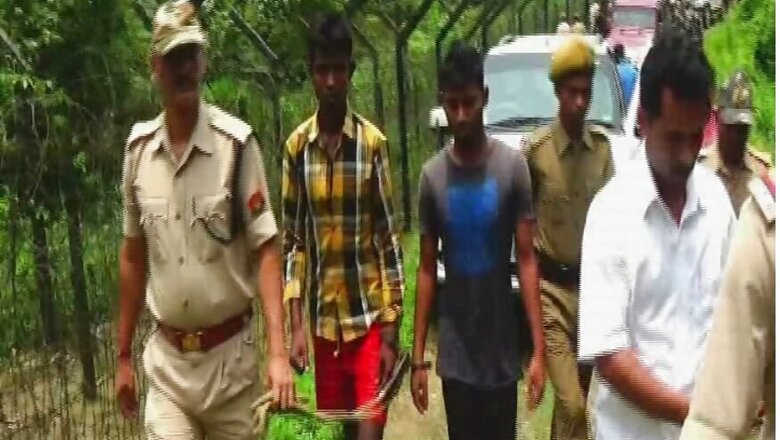
views
Guwahati: With the start of Ramzan, cattle smugglers along the Indo-Bangladesh border in Assam are resorting to new tactics - sneaking cattle through Hume pipe culverts under border roads. Karimganj police on Monday night apprehended two illegal infiltrators crossing over to Nilambazar village through an almost 20 feet long culvert.
“We received information about the presence of cattle smugglers in the area, and launched an operation around 1 am. They were a group of seven armed miscreants who attacked us on being intercepted. We managed to apprehend two of them,” said Gaurav Upadhyay, Superintendent of Police, Karimganj district.
The arrested duo has been identified as Ataur Rahman and Samsul Islam of Barlekha area in Bangladesh. Interrogation revealed that the cattle smugglers had deployed local villagers on the Indian side of the border to carry out well-coordinated smuggling operations. With smugglers now altering tactics, the Border Security Force and Assam police have put their movement patterns under technical surveillance. Karimganj police apprehended more than 10 smugglers operating along the border last month.
“We wanted to see how they cross over to India despite the fencing, and found out that there are natural gaps across the riverine border that provide routes for smuggling. These pipe culverts for water supply have proved to be their alternative routes with the normal overland route getting choked because of our operations. We also have proof of locals being involved in the cattle smuggling syndicate,” said Upadhyay.
The Hume pipe culverts located about 10-15 feet below the patrolling roads are approximately 3 feet in diameter. Cattle smugglers move dexterously through these routes in the marshes to slip cows and buffaloes to the other side. According to police, there are about 63 such ‘natural gaps’ along the approximately 106 km long porous border in Karimganj district. In the whole stretch, two patches remain ‘unfenced’. The BSF now plans to put up strong lighting and more resources along this route to check smuggling.
India shares a 4,096km border with Bangladesh, and cattle smuggling takes place at various points along this boundary in the five border states of Assam, Meghalaya, Mizoram, Tripura and West Bengal.
Checking illegal cross-border activities and cracking down on cattle smugglers has been quite a challenge for security forces. In Karimganj, the unavailability of cattle pounds (where cattle is kept) is a serious setback to anti-smuggling operations. The seized cattle is kept at the police station for weeks and then auctioned.
“A syndicate of cattle smugglers here try to reclaim the cows in auctions, but we have fought them in court, and even got orders to allow public auction under police scrutiny,” said Upadhyay.
As Eid approaches, there’s growing concern about new smuggling routes being used by Bangladeshi immigrants in the rugged Indian terrain and undulating pasture lands of Karimganj in southern Assam. Police said cattle smuggling in trucks and vehicles reduced significantly in past one year with more than 400 heads of cattle seized by BSF and Karimganj police. However, the smugglers have now taken to arterial roads and transport cattle in smaller vehicles. Sometimes, they even walk the cattle to a remote village near the international border from where they are collected and sneaked out at an opportune time.
The cattle bought from Uttar Pradesh and other places for Rs 4000-5000 per animal are sold in Bangladesh for Rs 60,000-70,000 during the holy month of Ramzan. Prices shoot up further during Eid.
(With inputs from Gourish Nandy)



















Comments
0 comment